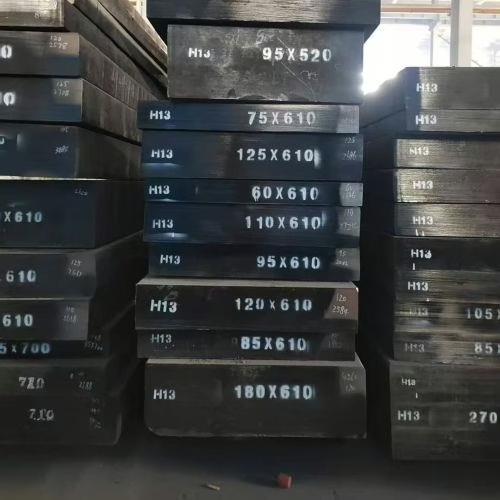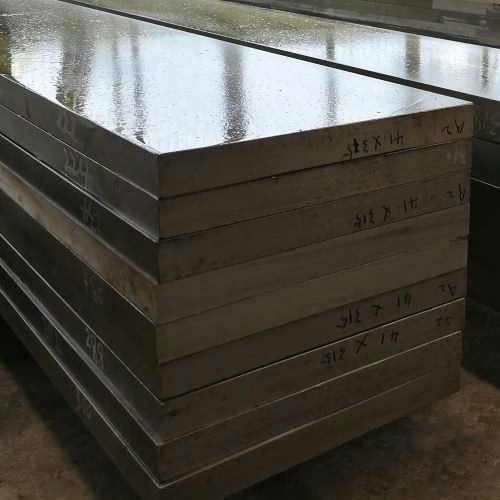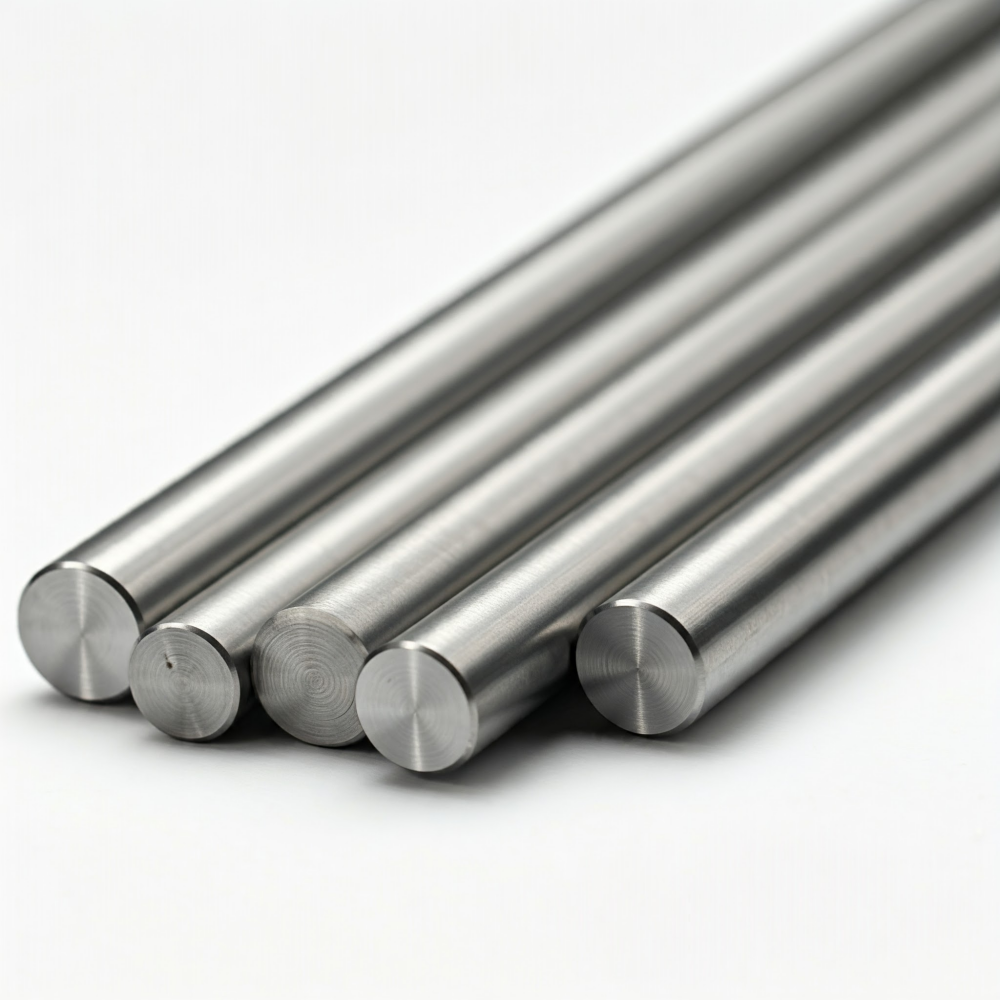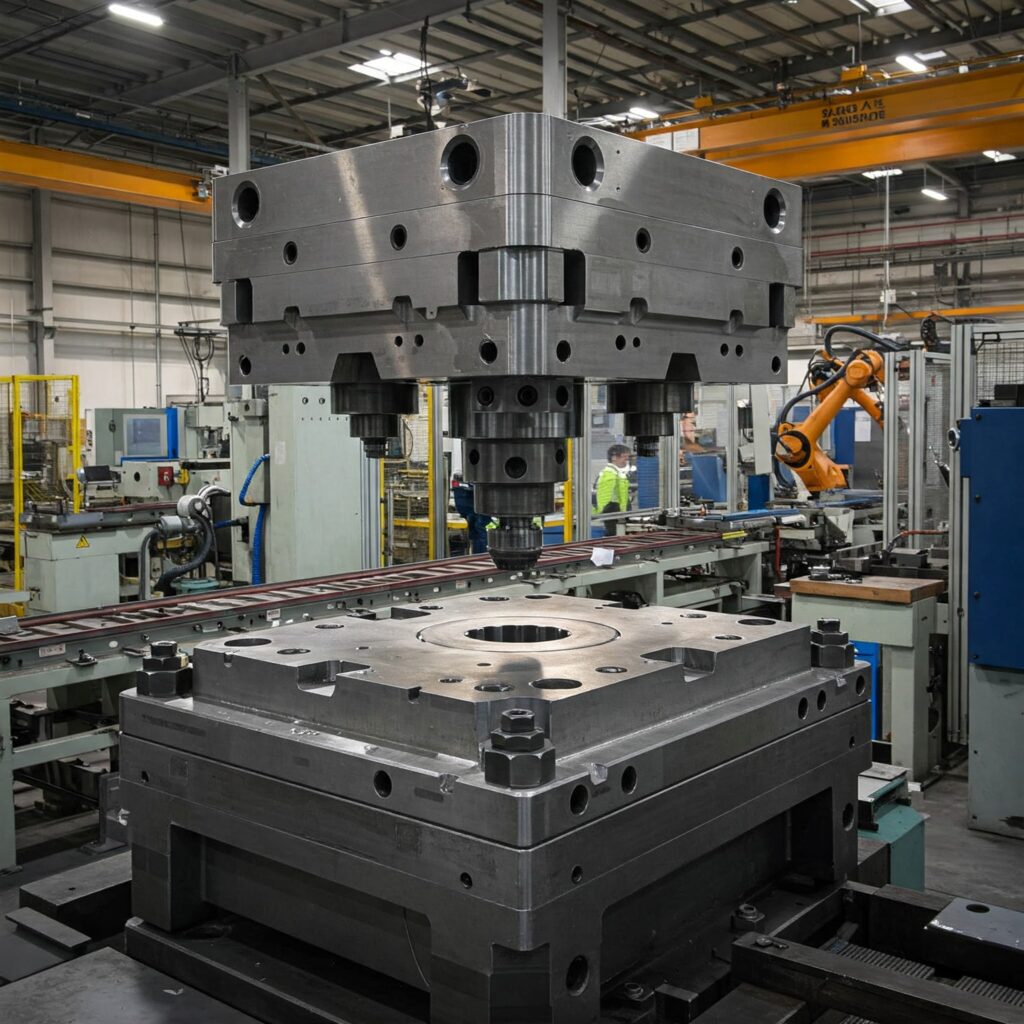Tiempo estimado de lectura: 7 minutos
Conclusiones clave
- H13 vs A2 tool steel highlights two different types of tool steels: H13 is a hot-work steel, while A2 is a cold-work steel.
- H13 performs well at high temperatures, up to 700°C, whereas A2 operates best below 200°C.
- H13 excels in toughness but has lower wear resistance, while A2 has greater wear resistance but reduced toughness.
- Heat treatment affects both steels; H13 requires multiple tempering cycles for optimal performance, while A2 is typically tempered at lower temperatures.
- Applications differ significantly: H13 is used for die-casting and forging, while A2 is favored for mass production and cold-forming dies.
Tabla de contenido
H13 vs A2 tool steel: What is the difference between H13 y A2 steel? In modern manufacturing, tool steel is an indispensable core material as a specialized, high-quality steel. Tool steel maintains its cutting and forming capabilities at extreme temperatures after quenching and tempering. When our customers select materials for complex operating conditions, we typically recommend evaluating them across three core dimensions, which constitute the three critical factors of tool steel performance: wear resistance, toughness, and hot hardness.
Within the AISI (American Iron and Steel Institute) standard system, H13 and A2 are two highly representative foundational steel grades, yet their application scenarios are entirely distinct. H13 (1.2344), as a acero para herramientas de trabajo en caliente, is primarily used in high-temperature environments. It exhibits outstanding resistance to thermal fatigue and is widely employed in die-casting molds. Conversely, A2 is an air-hardening acero para herramientas en frío, designed for conditions at room temperature.


Defining the Operational Environment: Hot Work vs. Cold Work
In selecting tool and die steels, H13 and A2 are often used as typical reference points. The most fundamental difference between H13 and A2 lies in their operating temperatures. H13 maintains its strength at high temperatures, withstanding instantaneous temperatures up to 700°C (1300°F). Of course, H13 also has a temperature limit. Beyond 650°C (1138°F), the strength of H13 material begins to decline. To extend the material’s service life, it is recommended to use higher-purity ESR (Electroslag Remelting) H13 material. A2, on the other hand, is only suitable for ambient temperature environments, with typical operating temperatures below 200°C (400-500°F).
Composition and Mechanical Property Comparison
| Símbolo | H13 Tool Steel(%) | Acero para herramientas A2 (%) |
| C | 0.32 – 0.45 | 0.95 – 1.05 |
| Cr | 4.75 – 5.50 | 4.75 – 5.50 |
| Mo | 1.10 – 1.75 | 0.90 – 1.40 |
| V | 0.80 – 1.20 | 0.15 – 0.50 |
| Si | 0.80 – 1.20 | 0,50 (máximo) |
| Mn | 0.20 – 0.50 | 1.00 (Máx.) |
| PAG | 0,03 (máx.) | 0,03 (máx.) |
| S | 0,03 (máx.) | 0,03 (máx.) |
In the world of tool steels, no single material is perfect. Material selection is fundamentally a trade-off between three core properties: wear resistance, toughness, and hot hardness.
- Toughness. On a toughness rating scale of 1-9 (lowest to highest), H13 rates 9 while A2 rates 5. If your tooling must withstand severe impacts or operate under complex stresses, toughness is the primary consideration. H13 has a lower carbon content and typically achieves a hardness of 40-50 HRC. The low carbon content minimizes the formation of unsolved carbides, thereby enhancing H13’s impact resistance. In contrast, A2 exhibits moderate toughness. To meet hardness requirements in cold-working applications, A2 increases its carbon and carbide content, boosting its hardness but partially reducing its toughness.
- Wear Resistance. On a wear resistance rating scale of 1-9 (lowest to highest), H13 is rated 3, while A2 is rated 6. Wear resistance typically correlates directly with carbon content and the quantity of hard carbide particles in the steel. A2 contains higher carbon. This high carbon content forms abundant hard carbides, giving it significantly superior room-temperature wear resistance compared to H13. Due to its lower carbon content, H13 lacks sufficiently large primary carbide particles to resist abrasive wear. While its vanadium content provides some assistance, it cannot compete with cold-worked steel in a pure wear resistance comparison.
- Red hardness. On the red hardness rating scale of 1-9 (lowest to highest), H13 is rated 6, and A2 is rated 5. While ordinary steel rapidly softens and deforms above 500–550°C, H13 maintains high hardness and strength even at elevated temperatures. A2 lacks the alloying elements necessary to resist high-temperature softening, limiting its application to cold-working environments.
Heat Treatment and Manufacturing Characteristics
Material selection is only the first step; the ultimate performance of tools and dies is often determined by the heat treatment process. Both H13 and A2 are air-hardening, deep-hardening steels that harden by air cooling. Compared to oil or water quenching, air hardening induces minimal thermal stress and poses the lowest risk of deformation. According to some data sources, H13 and A2 exhibit extremely minimal dimensional expansion after proper heat treatment, approximately 0.001 mm/mm.
During tempering, the processes for H13 and A2 steel differ significantly. H13 is a secondary hardening steel, and it is recommended to perform at least two tempering cycles, or even triple tempering. Multiple tempering cycles not only relieve residual stresses but also promote carbide precipitation, resulting in exceptional red hardness and thermal fatigue resistance. A2 steel exhibits a secondary hardening peak around 510°C. However, in cold-working applications, high-temperature resistance is typically unnecessary; instead, sufficient hardness and wear resistance are required. In practice, to achieve high hardness in A2 steel, a lower tempering temperature of 230°C is commonly employed. High-temperature tempering is considered only when extremely high toughness is required or to eliminate retained austenita.
In terms of machinability, with 1% carbon tool steel set as the 100-point benchmark, H13 in the recocido state has a machinability score of approximately 70 points. Similarly, the A2 score in the annealed state is about 60 points. Machining accounts for a significant portion of tool-and-die manufacturing costs. Therefore, machinability is a critical factor that cannot be overlooked.
Aplicaciones
- Aplicaciones del acero para herramientas H13Ampliamente utilizado para aplicaciones generales de trabajo en caliente, matrices de fundición a presión (para aluminio, zinc y magnesio), herramientas para moldes de inyección de plástico y herramientas de forja. Es adecuado para matrices de extrusión en caliente de aluminio, magnesio, acero, cobre y latón. También se utiliza para punzones, perforadores y mandriles para trabajo en caliente. Puede utilizarse como acero para moldes en cavidades mecanizadas y se recomienda para moldes de plástico altamente pulidos tras el refinado ESR. En ocasiones, se emplea para piezas estructurales sometidas a altas tensiones en la industria aeroespacial debido a su resistencia al ablandamiento a temperaturas elevadas y su tenacidad moderada.
- A2 Tool Steel: A general-purpose air-hardening tool steel with a wide range of tooling applications. Commonly used for blanking and piercing dies in mass production. Also used for cold-forming dies, coining dies, drawing and lamination dies, thread-rolling dies, shear and slitter blades, and forming rolls. It’s a good choice for intermediate-service cold-work tools and dies. It can be used for small molds and inserts, and is preferred for large dies due to low distortion during tratamiento térmico. Sometimes used as an alternative to hot-work steels for hot shearing tools and dies used in the hot extrusion of zinc.
Resumen de comparación
| Característica | Acero para herramientas H13 | Acero para herramientas A2 |
| Aplicación principal | Aplicaciones de trabajo en caliente (por ejemplo, fundición a presión, forja, extrusión). | Aplicaciones de trabajo en frío (por ejemplo, troquelado, conformado, embutido). |
| Resistencia al desgaste | High abrasion resistance. Better than S-series but generally less than D-series. Suitable for long production runs on thin- or medium-thickness stock. | Alta resistencia a la abrasión. Superior a la serie S, pero generalmente inferior a la serie D. Ideal para tiradas largas en material fino o de grosor medio. |
| Dureza | Excelente resistencia al impacto y buena tenacidad; su alta resistencia a los golpes lo hace preferible para la mayoría de las operaciones de trabajo en caliente. | Tensiones residuales mínimas y distorsión mínima o nula durante el endurecimiento al aire. |
| Dureza en caliente | Muy alta; mantiene alta dureza (por ejemplo, ~52 HRC a 540 °C) y resistencia a temperaturas elevadas; excelente resistencia al revenido (endurecimiento secundario). | High abrasion resistance. Better than S-series but generally less than D-series. Suitable for long production runs on thin- or medium-thickness stock. |
| Templabilidad | Endurecimiento profundo, endurecimiento al aire. | Endurecimiento profundo, endurecimiento al aire. |
| Estabilidad dimensional | Tensiones residuales mínimas y distorsión mínima o nula durante el endurecimiento al aire. | Mínimo movimiento y baja distorsión en el endurecimiento, alta seguridad contra el agrietamiento. |
| Maquinabilidad | Buen estado en estado templado. Clasificación de recocido: 70% en comparación con el acero al carbono 1% (W1). | Fácil mecanizado. Clasificación de recocido: 60-65% en comparación con el acero al carbono 1% (W1). |
| Dureza típica | Dureza de trabajo normal para fundición a presión: 44-8 HRC; para resistencia a impactos: 40-4 HRC. Se puede tratar térmicamente a más de 2070 MPa (300 ksi). Dureza en estado de temple: ~53 HRC. | Dureza de trabajo normal: 58-60 HRC. Dureza en estado de temple: ~64 HRC. |
In essence, H13 is engineered for severe high-temperature environments, prioritizing hot hardness and strong impact resistance, whereas A2 is a versatile cold-work steel that excels in wear resistance and dimensional stability for room-temperature operations. If you are having trouble deciding between these two materials, please get in touch with us for professional advice.


